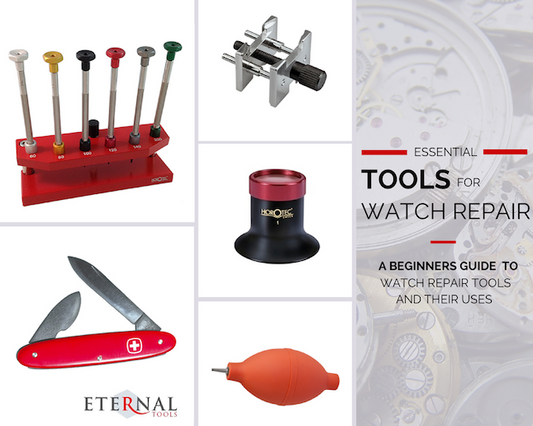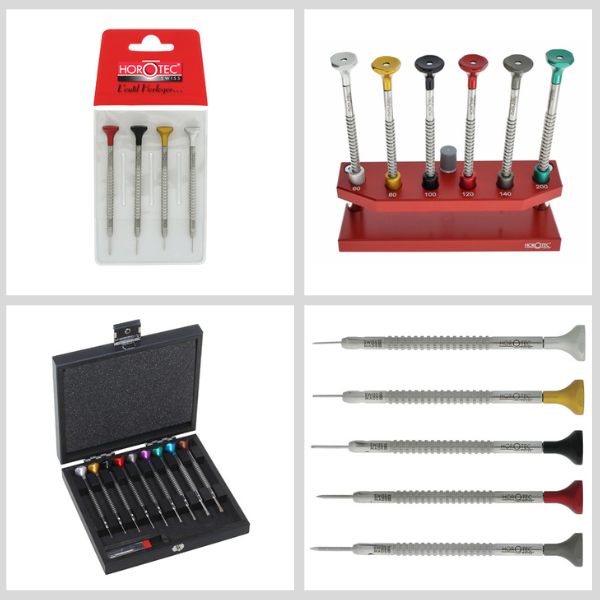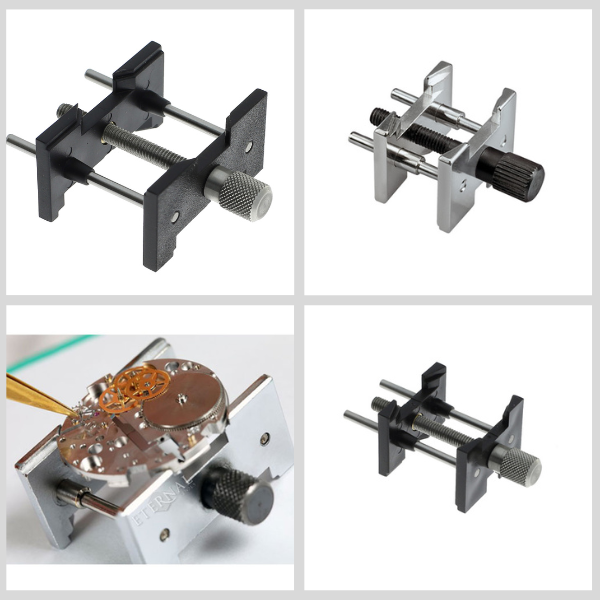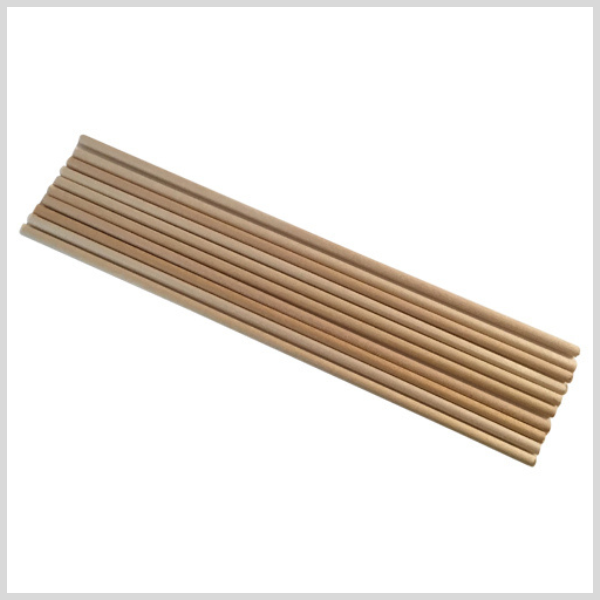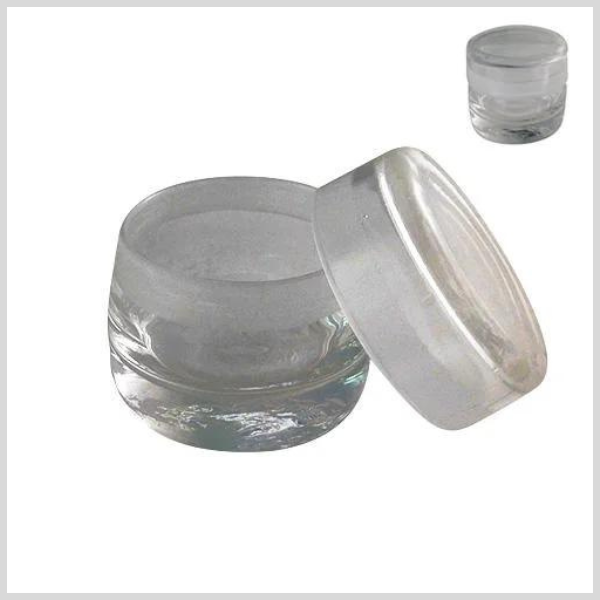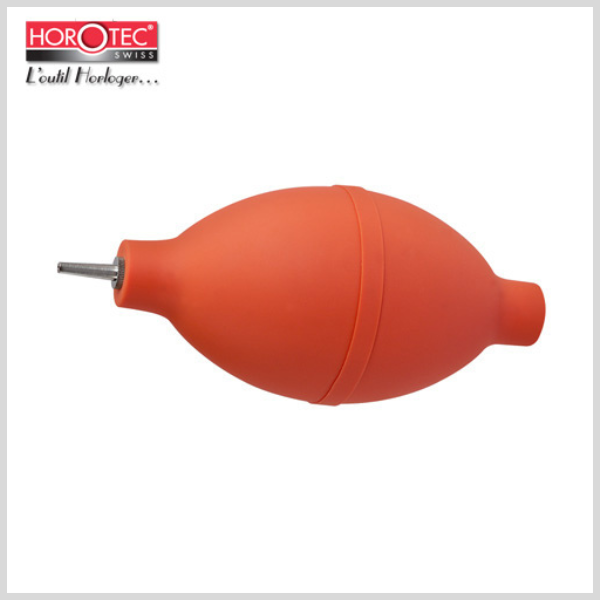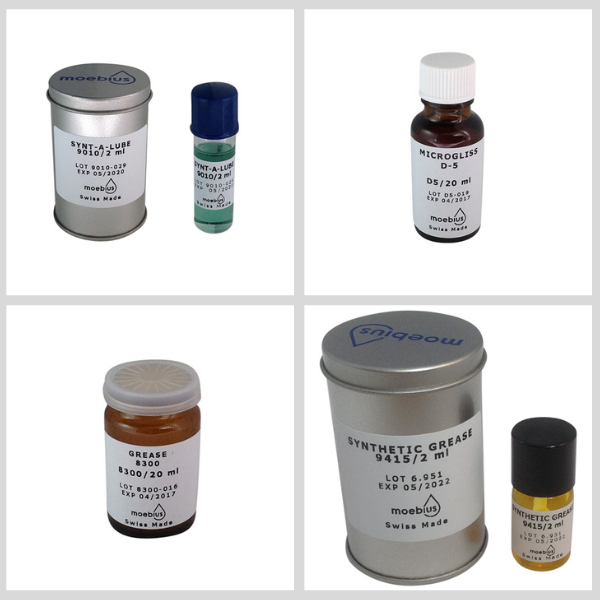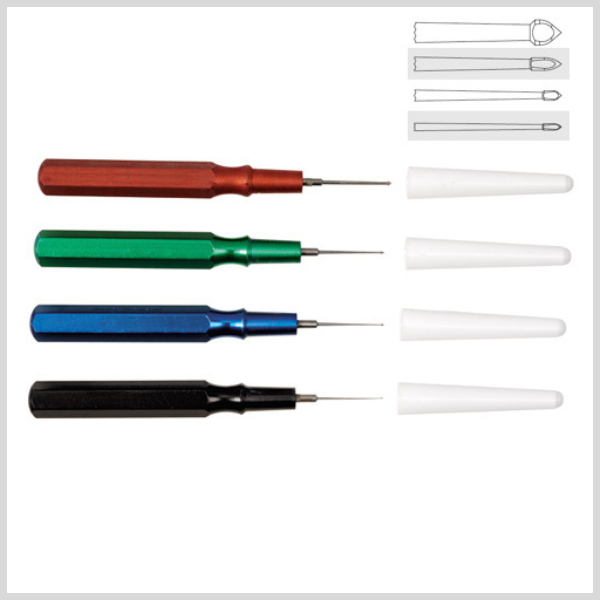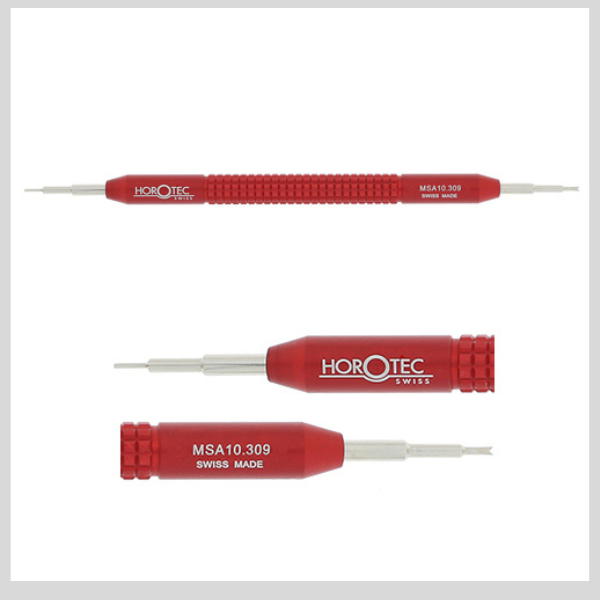Getting Started with Watch Repair: Essential Tools for Beginners
Watchmaking and home watch repair are hugely rewarding hobbies, but when you first look at the sheer number of tools available, it can feel a bit intimidating. Where do you start, and which tools do you really need?
If you’d like to begin with a carefully curated, Swiss-made toolkit rather than choosing each tool individually, the Horotec Professional Watchmakers Kit is a superb option. It gives you a solid foundation of professional-quality tools from day one.
Horotec Professional Watchmakers Kit
This premium kit brings together a selection of high-quality Horotec tools used by professionals, making it ideal for beginners who want to start with dependable equipment, as well as enthusiasts looking to upgrade from basic, lower-quality tools.
If you’d prefer to build your own setup instead, the list below covers 12 essential watch tools that every aspiring horologist should consider for their first repair kit.
1. Watch Case Opener: First Step in Any Watch Repair
Before you can see what’s going on inside a watch, you need a safe way to open the case. A good case opener lets you remove the back (and sometimes the front) without slipping, scratching the case, or damaging the movement.
Depending on the design, the watch may have a screw-back or a snap-on case. Screw-back watches require a case wrench such as an adjustable Jaxa or a manufacturer-specific tool like the Horotec watch back removal tool.
For snap-on case backs, a purpose-made case opener knife is the safest option. The blade is slipped under the lip of the case back and gently twisted to lift it away from the case. Some knives are double-ended, with one blade for cutting and the other for opening cases, which is also handy for trimming Pegwood.
If you’re working with levered backs, it’s worth reading up on the correct technique—this guide on how to open watch backs with a case opener knife is a good place to start.
2. Precision Screwdrivers: Essential for Every Watch Repair Toolkit
Once the case is open, you’ll quickly need a reliable set of watchmakers screwdrivers to remove case screws, stems and movement screws. Cheap screwdrivers can chew up delicate screw heads and slip at the worst moments, so it’s worth investing in a quality set.
A precision screwdriver set from a Swiss brand such as Horotec or Bergeon will usually last many years with proper care. For most beginner-level work, you will rely heavily on just four sizes:
- Grey – 1.40 mm
- Red – 1.20 mm
- Black – 1.00 mm
- Yellow – 0.80 mm
Good watchmakers screwdrivers have smooth, ball-bearing swivel heads, and the blades are both replaceable and resharpenable. You can extend their life by using replacement blades and a screwdriver sharpening tool when the tips become worn.
Opinions vary, but many watchmakers feel that Horotec screwdrivers have a slight edge in terms of feel and finish.
3. Fine Tweezers: For Handling Delicate Watch Parts
As soon as you start removing screws, wheels and springs, you’ll need a pair of fine watchmakers tweezers. These are used to lift parts onto a watch parts storage container and to place them accurately during reassembly.
Unlike cosmetic tweezers, watchmakers tweezers have carefully aligned tips designed to grip tiny components without slipping or scratching. A basic starting set often includes:
- No. 2 – strong with fine, flat tips
- No. 3 – general-purpose, fine tips
- No. 5 – extra-fine tips for hairspring work
- Brass AM – softer, non-marking tips for sensitive parts
- Plastic – useful when working on quartz movements
Non-magnetic tweezers are well worth considering, as they help to prevent small screws from sticking to the tips. Brands such as Horotec, Bergeon and Dumont are highly regarded for their precision and durability.
Hold your tweezers like a pen and practise rotating them while gripping parts gently but securely. Good control here makes every other step of watch repair easier.
4. Eyeglass or Eye Loupe
Watch components are tiny, and you’ll struggle to see what you’re doing without proper magnification. An eyeglass or eye loupe is therefore one of the first things to add to your kit.
Although there are many designs available, most beginners only need two types:
- General eyeglass (around 3–4× magnification) for everyday work
- Inspection eyeglass (around 10–12× magnification) for close examination of jewels, pivots and escapements
Quality eyeglasses from Bergeon or Horotec offer clear optics and comfortable working distances. Many are numbered (for example No. 1 or No. 2.5), which roughly corresponds to the focal distance in inches. The higher the number, the further away you can work, which helps reduce eye strain.
If you find it difficult to hold an eyeglass in place, a wire eyeglass holder can be a big help. It keeps the loupe secure while you work and also acts as a convenient way to keep it around your neck between jobs.
5. Watch Hand Lifting Levers
Before you can remove a dial, the hands need to be lifted off cleanly and safely. For this, you’ll want a pair of watch hand levers or a specialist hand removal tool in your kit.
Traditional Hand Lifting Levers and the Presto Automatic Hand Lifting Tool both do the same basic job: they lift the hands vertically away from the dial. Levers rock on their angled tips to apply an even upward force, which helps to avoid bending the hands.
To protect the dial surface, it’s common practice to place a dial protector or even a thin plastic bag between the levers and the dial. The Presto-style tools are quick and convenient, but you do need to be careful with the small plastic feet, which can mark a dial if misused.
Hand Lifting Levers come in different sizes to suit various watches. As with most tools, very cheap versions often have rough edges or poor finishing, which can damage either the hands or the dial.
6. Movement Holder
Once the movement is out of the case, it needs to be supported securely without being touched directly by your fingers. A movement holder provides a stable platform and reduces the risk of slipping or bending parts while you work.
A standard reversible movement holder can handle a range of sizes—small movements on one side, larger ones on the other. Horotec and Bergeon both produce excellent holders with precise, well-finished jaws.
Some brands design their own custom-shaped movement holders for particular calibres, and you’ll also find more unusual designs, including holders made from bamboo. Whatever style you choose, a good movement holder quickly becomes one of the most-used tools on your bench.
7. Parts Container
When you first start out, it’s tempting to put parts down anywhere “just for a moment”. This is how screws disappear and wheels get dusty. A dedicated watch parts storage container solves this problem.
Parts containers allow you to separate components as you dismantle the watch and, most importantly, to keep them covered while you clean other parts or take a break. A simple container with a dust cover is usually all you need.
They’re inexpensive, and while not absolutely essential, they make your workbench far more organised and help protect tiny, cleaned parts from dust and debris.
8. Pegwood
Pegwood looks unassuming, but it’s one of the most useful items on a watchmaker’s bench. It’s made from hard, close-grained wood that holds a point or flat tip much better than toothpicks or general wooden sticks.
Pegwood has many uses, but two of the most common are:
- Cleaning jewel holes and other contact surfaces before chemical cleaning
- Holding down springs and small parts safely during assembly and disassembly
You’ll need a sharp knife to dress the ends of the pegwood into different shapes. A fine point and a flat chisel shape will cover most tasks. It’s a simple tool, but once you get used to it, you’ll wonder how you ever worked without it.
9. Glass Benzine Jar and Watch Degreasing Fluid
After you’ve cleaned the pivot holes and key areas with pegwood, the watch parts need to be properly degreased. Professional watchmakers usually use a watch cleaning machine—often ultrasonic—to remove old oils and dirt thoroughly.
For beginners, a simple glass benzine jar and a suitable cleaning or degreasing fluid is a more affordable way to start. Benzine is no longer used, but a modern degreasing fluid such as Renata Essence can do the job very effectively.
Even if you later invest in a machine, a benzine or essence jar remains useful for quick cleaning jobs, correcting contaminated parts, or removing excess oil. Make sure the jar has a good lid to reduce evaporation, and consider using a small paintbrush to help work the fluid into intricate parts.
10. Rubber Dust Blower
Dust and dirt are among a watch movement’s biggest enemies. Blowing on a watch with your mouth introduces moisture and contaminants, so a dedicated rubber dust blower is a must-have.
Rubber dust blowers are inexpensive and very effective at removing dust from bridges, dials and cases. They’re also perfect for drying parts after cleaning, especially when used in combination with tweezers to hold the part steady.
Do take care, though—dust blowers can be surprisingly powerful. If a part isn’t held securely, it can disappear across the room faster than you’d imagine.
11. Watch Oils and Greases, Oilers and Oil Pots
Once the movement has been cleaned and dried, it’s time to reassemble and lubricate. Applying the right oils and greases in the right places is crucial for accurate timekeeping and long-term reliability.
There are many lubricants on the market, but most professionals agree that Moebius is one of the most trusted names. Here are four widely used options:
Moebius 9010 Oil – ideal for fast-moving, low-torque areas such as balance staff pivots and escape wheel pivots.
Moebius D5 (HP1300) Oil – suitable for slower, high-torque components including the barrel arbor and centre wheel.
Moebius 8300 Grease – used on hand-setting mechanisms, winding systems, and friction-based parts such as the canon pinion.
Moebius 9415 Grease – designed for pallet stones in high-speed escapements over 21,600 vph.
All of your oils and greases should be kept in covered oil pots to prevent dust contamination.
To transfer lubricant to the movement, you’ll need a set of watch oilers. These have coloured handles and a fine metal stem with a small, spade-shaped tip. A typical set includes four sizes:
- Red – large tip
- Green – medium tip
- Blue – fine tip
- Black – very fine tip
You dip the oiler into the oil in an oil cup and touch it to the jewel or surface that needs lubricating. Holding the oiler vertically helps guide the oil into small recesses.
A piece of pith wood is excellent for cleaning the oiler between oils, and Rodico (below) can also be used to remove residue from the tip.
12. Rodico Cleaning Putty
Rodico is another deceptively simple but essential tool. It’s a soft cleaning putty that almost every professional watch repairer keeps within easy reach.
Rodico is perfect for lifting fingerprints, excess oil, dust and small debris from the movement without scratching the surfaces. It’s also brilliant for picking up tiny screws or jewels that are awkward to grasp with tweezers.
Use it a bit like a pencil eraser—dab or gently wipe it over the area to be cleaned. When the surface of the Rodico becomes dirty, simply stretch and fold it a few times to expose a fresh area and carry on using it. It’s inexpensive, long-lasting and incredibly versatile.
Optional Extra: Spring Bar Tool
While not essential for your very first toolkit, a good spring bar remover quickly becomes a favourite tool. Professional watchmakers almost always have a spring bar tool within arm’s reach.
Spring bar tools are used to remove and refit the bars that hold straps, bracelets and bands to the watch case. Most designs feature a fine fork at one end for compressing the spring bar and a pin at the other for pushing through drilled lugs.
As you progress, you may also want to add bracelet pins, a block-style case holder or a bracelet holding vice. Pin punch tools provide a pin-vice type handle and spare pins for removing friction pins from metal bracelets, while the block or vice keeps the bracelet steady as you work.
Final Thoughts
There are many watch tool kits on the market, ranging from very inexpensive sets to high-end professional assortments. The cheaper kits can be tempting, but they often include tools that are poorly finished or imprecise, which can make learning watch repair more frustrating than it needs to be.
One approach is to build your toolkit gradually, choosing each tool carefully to suit your budget and the type of work you’d like to do. Over time, you’ll end up with a personalised kit of reliable tools that you genuinely enjoy using.
If you’d rather start with a complete, high-quality set, the Swiss-made Horotec Professional Watchmakers Kit offers a ready-made solution without compromising on standards. It’s an excellent starting point for beginners who want confidence in their tools from the very beginning.
Whichever path you choose—building your own kit or investing in a professional set—good tools will make your watch repair journey smoother, more accurate and far more enjoyable.

